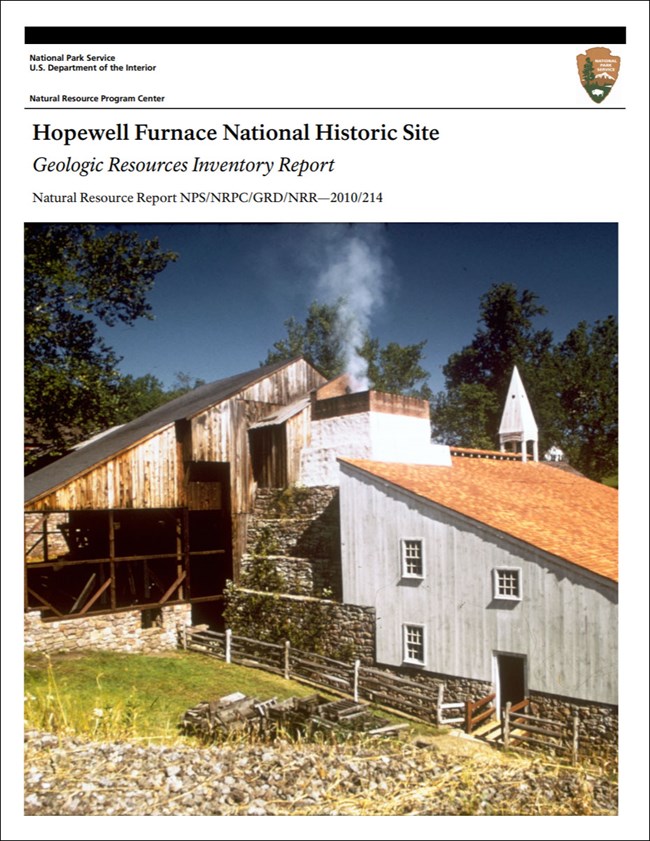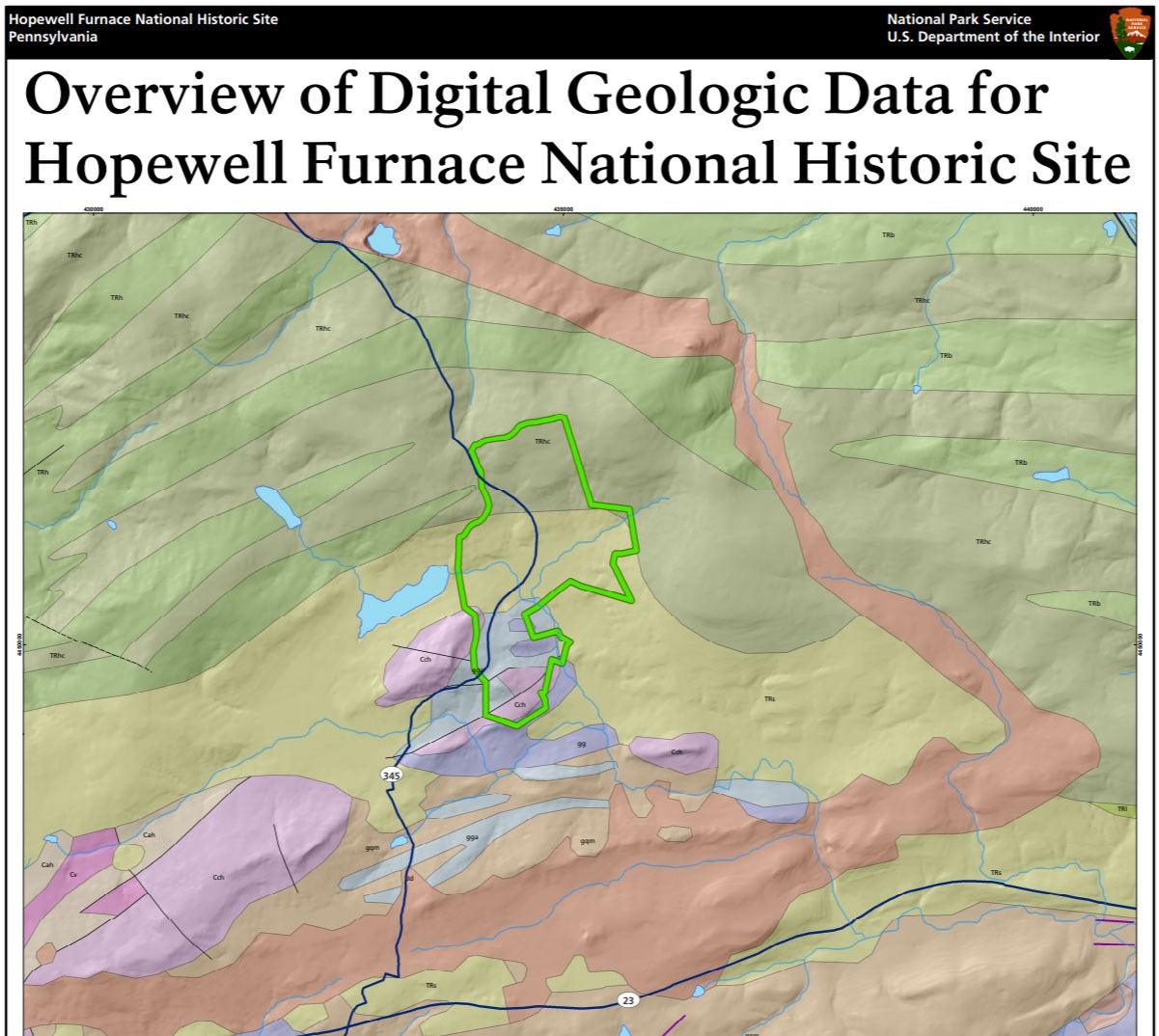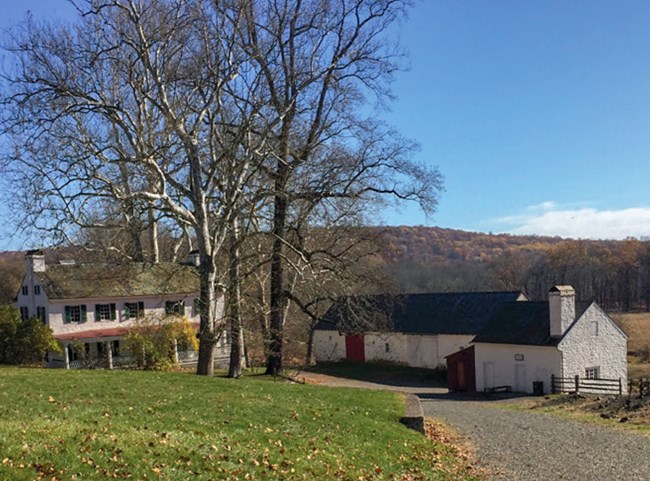Last updated: July 5, 2024
Article
NPS Geodiversity Atlas—Hopewell Furnace National Historic Site, Pennsylvania
Geodiversity refers to the full variety of natural geologic (rocks, minerals, sediments, fossils, landforms, and physical processes) and soil resources and processes that occur in the park. A product of the Geologic Resources Inventory, the NPS Geodiversity Atlas delivers information in support of education, Geoconservation, and integrated management of living (biotic) and non-living (abiotic) components of the ecosystem.

Introduction
Hopewell Furnace National Historic Site (HOFU) straddles the border of Berks and Chester Counties in southeastern Pennsylvania and is surrounded by French Creek State Park. Originally designated Hopewell Village National Historic Site on August 3, 1938, the park unit was renamed on September 19, 1985 (National Park Service 2016). Encompassing about 343 hectares (848 acres), HOFU is one of the finest examples of a rural American iron plantation of the 1800s. The historic site contains buildings that include a blast furnace, the ironmaster’s mansion, and auxiliary structures. Mark Bird founded Hopewell Furnace in 1771 and during its period of operation until 1883 the iron-making complex produced pig iron and cast-iron products such as stove plates, kettles, plowshares, shot, weights, and other necessities for living in 19th century America. HOFU commemorates the essential role of the industrial age in the growth of the early United States and educates the public about this pivotal time in American history.
Geologic Setting
The geology of Hopewell Furnace National Historic Site is characterized by Precambrian crystalline rocks, Paleozoic metamorphic and sedimentary rocks, and Triassic sedimentary rocks. Older, more resistant Precambrian and Cambrian-age metamorphic rocks including silica-rich graphitic gneiss, banded mafic gneiss, and quartzite underlie the steepest topography in the southern area of the historic site. The northern part of the historic site consists of quartz conglomerate and sandstone of the Triassic Hammer Creek Formation that is more resistant to erosion than the sandstone, siltstone, and mudstone of the Triassic Stockton Formation found throughout the center of HOFU (Thornberry-Ehrlich 2010c). The unconformable contact between the younger Triassic and older Precambrian strata represents a 300- million-year gap in the historic site’s rock record.
Regional Geology
Hopewell Furnace National Historic Site is a part of the Piedment Physiographic Province and shares its geologic history and some characteristic geologic formations with a region that extends well beyond park boundaries.
- Scoping summaries are records of scoping meetings where NPS staff and local geologists determined the park’s geologic mapping plan and what content should be included in the report.
- Digital geologic maps include files for viewing in GIS software, a guide to using the data, and a document with ancillary map information. Newer products also include data viewable in Google Earth and online map services.
- Reports use the maps to discuss the park’s setting and significance, notable geologic features and processes, geologic resource management issues, and geologic history.
- Posters are a static view of the GIS data in PDF format. Newer posters include aerial imagery or shaded relief and other park information. They are also included with the reports.
- Projects list basic information about the program and all products available for a park.
Source: NPS DataStore Saved Search 2900. To search for additional information, visit the NPS DataStore.
A NPS Soil Resources Inventory project has been completed forHopewell Furnace National Historic Site and can be found on the NPS Data Store.
Source: NPS DataStore Saved Search 2971. To search for additional information, visit the NPS DataStore.
Related Articles
Hopewell Furnace National Historic Site
National Park Service Geodiversity Atlas
The servicewide Geodiversity Atlas provides information on geoheritage and geodiversity resources and values within the National Park System. This information supports science-based geoconservation and interpretation in the NPS, as well as STEM education in schools, museums, and field camps. The NPS Geologic Resources Division and many parks work with National and International geoconservation communities to ensure that NPS abiotic resources are managed using the highest standards and best practices available.


